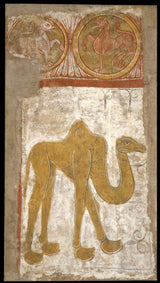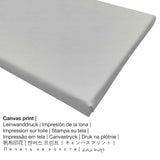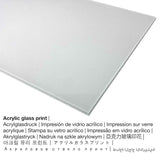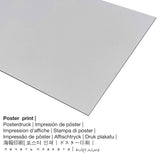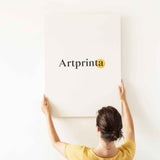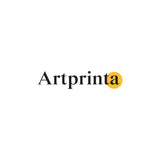Description by The Metropolitan Museum of Art (© Copyright - by The Metropolitan Museum of Art - Museumlọ ihe ngosi nka nke Obodo)
A hermitage was constructed in the first half of the eleventh century at San Baudelio de Berlanga, which was situated along part of the frontier between Islamic and Christian lands. (The site is halfway between Madrid and Saragossa, just north of today’s main road.) The church interior was transformed a century later, after the hermitage at Berlanga came under the control of an agent of Alfonso I, king of Aragon and Navarre, in 1129. Two cycles of vibrant wall paintings were created for the community of monks established there; scenes from the Life of Christ were set on an upper level, while images of animals and hunting decorated the lower wall. The camel was associated with the lands of the Bible, but also with power, luxury, and the exotic.
Nkọwa gbasara nka nka izizi
| Aha nke ihe nka: | "Camel" |
| nhazi ọkwa: | sere |
| Okwu mkpokọta: | nka ochie |
| Narị afọ nka: | 12th narị afọ |
| Afọ nka: | 1134 |
| Afọ nka: | 880 afọ |
| Usoro nka izizi: | fresco bufere na kwaaji |
| Akụkụ nke ihe osise izizi: | N'ozuzu: 97 x 53 1/2 na (246,4 x 135,9 cm) |
| Ụlọ ihe ngosi nka / ebe: | Museumlọ ihe ngosi nka nke Obodo |
| Ebe ebe ngosi nka: | New York City, New York, Njikota Obodo Amerika |
| Weebụsaịtị nke ihe ngosi nka: | www.metmuseum.org |
| Ikikere nke ihe osise: | ngalaba ọha |
| Site n'aka: | Ụlọ ihe ngosi nka nke Metropolitan, New York, mkpokọta Cloisters, 1961 |
| Ebe kredit nke ọrụ nka: | Nchịkọta Cloisters, 1961 |
Nchịkọta ihe nkiri
| Aha onye nka: | Unknown |
| Ọrụ: | onye na-ese ihe |
| Nhazi nke onye nka: | nna ukwu ochie |
Banyere ihe
| Ụdị ngwaahịa: | mmepụta nka |
| Usoro mmeghari: | mmeputakwa n'ụdị dijitalụ |
| Produzọ mmepụta: | UV kpọmkwem obibi |
| Production: | arụpụtara na Germany |
| Stockdị ngwaahịa: | mmepụta ihe na-achọ |
| Ojiji ngwaahịa: | ihe ndozi ụlọ, ụlọ mmepụta nka nka |
| Ndozi onyonyo a: | usoro eserese |
| Oke akụkụ: | ( Ogologo: obosara) 9: 16 |
| Nkọwa nke oke ihe onyonyo: | ogologo bụ 45% mkpụmkpụ karịa obosara |
| Nhọrọ ihe dị: | Mbipụta kwaaji, mbipụta ọla (aluminium dibond), mbipụta akwụkwọ mmado (akwụkwọ kwaaji), mbipụta enyo acrylic (nwere ezigbo mkpuchi iko) |
| Nhọrọ nha nha mbipụta kanvas (akwa akwa na etiti ihe ndọtị): | 50x90cm - 20x35", 100x180cm - 39x71" |
| Acrylic glass print (nwere ezigbo mkpuchi iko) nhọrọ: | 50x90cm - 20x35", 100x180cm - 39x71" |
| Mpempe akwụkwọ mmado (akwụkwọ kwaaji) nha dị iche iche: | 50x90cm - 20x35" |
| Nhọrọ nha nha nke Dibond (ihe alumnium): | 50x90cm - 20x35" |
| Nhazi mbipụta nka: | biko mara na ngwaahịa a enweghị etiti |
Họrọ ngwa ngwaahịa gị
Nchịkọta nhọrọ ngwaahịa na-enye gị ohere ịhọrọ nha na ihe ị họọrọ. Ị nwere ike ịhọrọ n'ime nhọrọ nhazi ngwaahịa ndị a:
- Mbipụta ọla (aluminium dibbond): These are metal prints on aluminium dibond material with an impressive depth. A non-reflective surface structure creates a fashionable look. For the Aluminium Dibond print, we print your favorite artpiece onto the surface of the white-primed aluminum material.
- Mpempe akwụkwọ (ihe kwaaji): The poster print is a UV printed sheet of flat canvas with a slightly rough surface texture. The printed poster is excellently appropriate for framing the art copy with the help of a custom frame. Please note, that depending on the size of the poster we add a white margin of approximately 2-6cm round about the print motif to facilitate the framing with your custom frame.
- Mbipụta iko acrylic (nke nwere ezigbo mkpuchi iko): An print on acrylic glass, often labelled as a UV print on plexiglass, changes your favorite original into marvellous décor. Additionally, the acrylic fine art print is a good alternative to canvas or aluminium dibond prints. Your favorite work of art is being printed thanks to modern UV printing technology. This has the effect of deep, vivid colors. With a glossy acrylic glass fine art print sharp contrasts and smaller details will be identifiable due to the granular gradation of the print.
- Mbipụta kanvas: The canvas direct print is a printed canvas mounted on a wood frame. Furthermore, a canvas makes a soft, appealing feeling. The advantage of canvas prints is that they are relatively low in weight, which implies that it is quite simple to hang your Canvas print without extra wall-mounts. Canvas prints are suited for any type of wall.
Onyinye ngwaahịa ebipụta
In 1134 onye na-ese ihe Unknown mere nka nka nke narị afọ nke 12 aha Kamel. The over 880 years old original had the following size: N'ozuzu: 97 x 53 1/2 na (246,4 x 135,9 cm) na arụpụtara ya na Usoro fresco bufere na kwaaji. What is more, this work of art can be viewed in in the The Metropolitan Museum of Art's art collection, which is one of the world's largest and finest art museums, which includes more than two million works of art spanning five thousand years of world culture, from prehistory to the present and from every part of the globe.. This classic art public domain piece of art is provided with courtesy of Ụlọ ihe ngosi nka nke Metropolitan, New York, mkpokọta Cloisters, 1961. Creditline of the artwork: The Cloisters Collection, 1961. Moreover, alignment of the digital reproduction is in portrait format with a side ratio of 9: 16, nke pụtara na ogologo bụ 45% mkpụmkpụ karịa obosara.
Ederede iwu: We try all that we can in order to describe the art products as accurate as possible and to demonstrate them visually on the different product detail pages. Nonetheless, the colors of the printing material, as well as the print result may diverge marginally from the presentation on your device's screen. Depending on your settings of your screen and the condition of the surface, not all color pigments are printed 100% realistically. In view of the fact that the fine art prints are printed and processed by hand, there might also be minor discrepancies in the size and exact position of the motif.
© Nchekwa ikike nwebisiinka | Artprinta.com (Artprinta)

